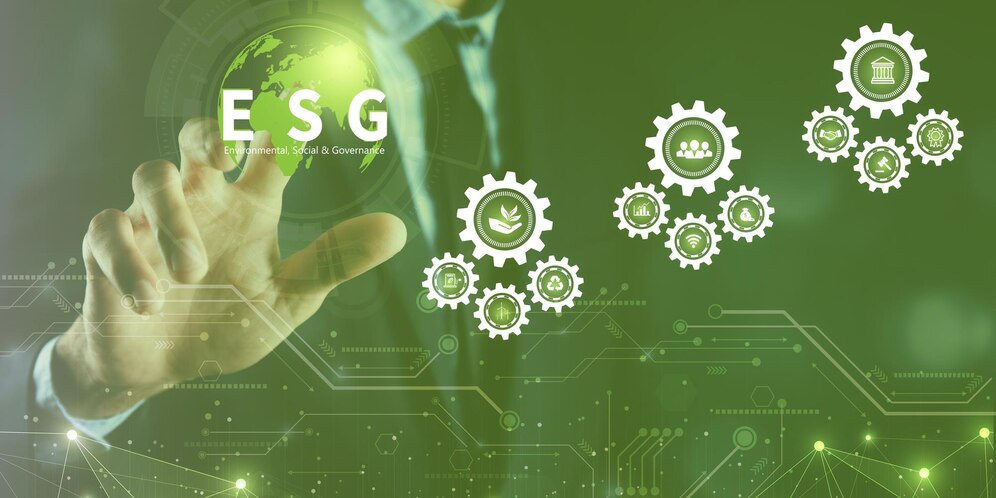The European Union’s renewed push for stronger ESG (environmental, sustainable, and governance) alignment through guidelines on reporting and compliance, is all set to shape the future of how businesses operate both within Europe and outside it. Moving from fragmented ad-hoc based initiatives run by corporations to a more uniform and structured approach, the new ESG guidelines are aimed to drive better data collection mechanisms, robust management control, and insight-led reporting that is not only comprehensive and transparent but also clear in its messaging for all stakeholders and investors.
This shift to the new ESG regime is made possible by underlying esg reporting software that works as the core IT systems to run processes, aggregate data, execute critical computational jobs, and create actionable ESG reports that comply with the regulations/ guidelines. The ESG data management software is a critical asset that is key to any organization and helps it achieve the desired ESG goals.
Six Practical Factors to Consider When Choosing ESG Data Software
While the ESG data software category is still rather new, technology companies are increasingly becoming aware of its potential. There are already standard commercial off-the-shelf systems that are beginning to be offered as end-to-end solutions. At a high level, most of the ESG data management software is designed to run standard data collection and reporting processes. Some also have in-built analytics, dashboards, and management-centric monitoring and control centers. However, there is no one-size-fits-all approach that works for ESG data software. An organization must consider certain key points before choosing the final solution.
Product capability:
The first and foremost factor to consider is the software vendor’s credibility and the product’s capability. While various manufacturers advertise various features, it is best to look for previous implementation experience and client citations to understand how well-placed the software is, in serving real-world organizations. Understanding the vision of the manufacturing vendor can also help gauge whether the ESG data management software is a focused offering or is a by-product designed to capitalize on the ESG hype.
Product architecture:
It is important to understand how the product has been architected. In other words, every ESG data software will have an underlying technology stack and functional modules. An organisation must assess the modules to understand how well they would support its business processes. The underlying technology stack is a pointer of how robust the software is and how well-supported it will be in days to come. As an investment for the long term, every ESG software needs to be assessed for how relevant it will be in the mid to long term.
Integration opportunities:
The ESG data management software will function in collaboration with existing processes and systems within an organisation. Carefully evaluating how well-suited the solution will be in integrating with existing systems and providing outputs through collaboration with other processes and users, will determine the overall utility. In many cases, a standalone solution looks good on paper but fails to deliver due to collaboration/ integration issues in real life.
Data robustness:
A large degree of ESG compliance is about collecting data and building analytical processes to report them in a meaningful form. The ESG data platform built into the solution is also supposed to leverage many external data sources such as sectoral benchmarks, materiality assessments, energy consumption rates, etc. Knowing how well the software is designed to capture and process these data, will help choose the most suitable solution.
Flexibility to customize:
Every business is unique, and the best solutions offer out-of-the-box configurability which allows the software to be tailored to the needs of the business and its processes. Further, as the business evolves, it becomes clear that upgrades and enhancements need to be made to the software modules. Evaluating how amenable the software is to regular enhancements, is a critical factor when choosing the right solution. The most suitable ESG software can keep in tune with the organization’s evolving business landscape and continue to deliver the desired outcomes.
Reliability of support:
No software will exist in isolation and there will always be the need to run some maintenance activities and deploy patches and production fixes. Organizations should choose ESG software depending on how reliable the manufacturer is in providing post-sales support. In addition, ESG regulations are constantly evolving, and the software will need to be periodically upgraded to keep it relevant. As such, a long-term support assurance from the vendor goes a long way in choosing the correct ESG software.
Conclusion
Several ESG-focused solutions are currently available in the market. However, choosing the right solution takes expertise and experience. Engaging with an ESG subject matter expert, an organization can not only critically evaluate the suite of available solutions but also ensure that the investment made towards implementing the ESG software, fetches the best returns.
FAQ
How does compliance support work in ESG software?
ESG software is designed to work in parallel with an organization’s existing business processes by collecting critical data such as production, emission, consumption, etc., and pulling external data from published benchmark sources to run further computations and generate reports. These reports are a real-time view of the management of the ESG compliance posture and offer the opportunity for corrective action to be taken. Finally, the ESG software also generates end reports in formats that are specified by regulators and require minimal human intervention by business users.
What makes ESG software user-friendly?
The ESG software is now widely being made available to businesses. As such, the overall interfaces, navigation, and user experience have been upgraded to boost the software’s usability. This includes intuitive user menus, cross-device compatibility, and self-explanatory reports that can easily be interpreted by technical and non-technical users. Further, the ESG software manufacturers are closely listening to their users’ feedback to constantly improve the user journey. As such, adopting ESG software adds significant value to the overall ESG compliance efforts that an organisation is making and ensures that the investment made fetches the desired outcomes.







